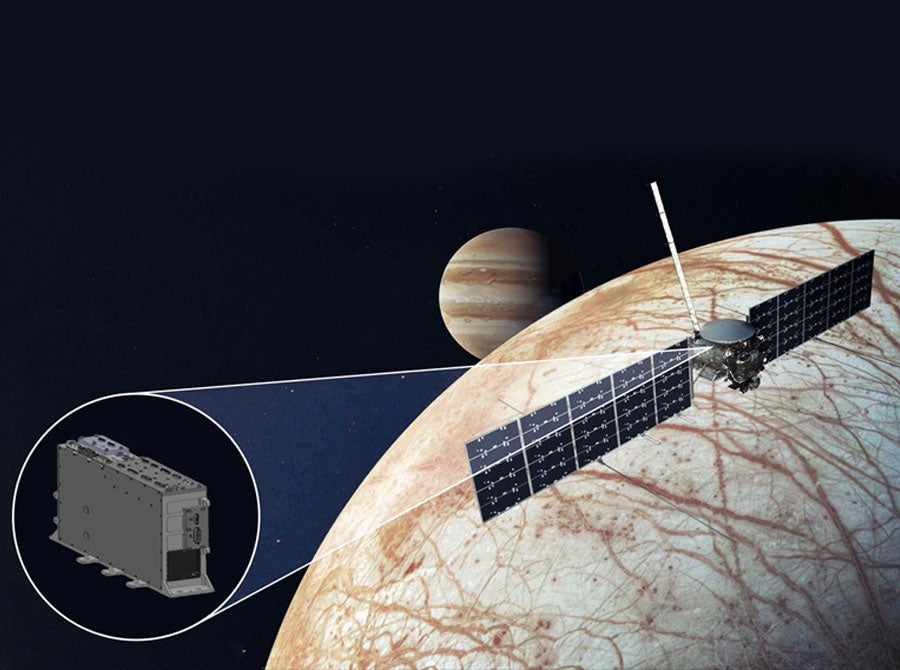Google News

WASHINGTON — A multibillion-dollar NASA mission to a potentially habitable moon of Jupiter has been cleared to begin final preparations for an October launch after resolving concerns about electronics on the spacecraft.
NASA announced Sept. 9 that the Europa Clipper mission has passed a review called Key Decision Point E. That allows the mission to move ahead into final preparations for a launch in a three-week window that opens Oct. 10 on a Falcon Heavy from the Kennedy Space Center.
The mission passed the review after months of intense study to determine if transistors used on various parts of the spacecraft could handle the radiation environment around Jupiter. The agency learned in May that tests of the transistors, known as metal-oxide-semiconductor field-effect transistors or MOSFETs, for a non-NASA customer showed they could fail at radiation doses lower than qualified for.
Within days, NASA set up a tiger team to study the potential problem, said Jordan Evans, Europa Clipper project manager at the Jet Propulsion Laboratory, at a Sept. 9 briefing. Initial test confirmed that the transistors did fail at lower radiation levels.
“That led to four months of around-the-clock testing at multiple locations around the country,” he said, as engineers sought to understand how susceptible various systems on the spacecraft were to radiation damage to those transistors.
“This was a huge lift, and I think ‘huge lift’ is a huge understatement,” said Laurie Leshin, director of JPL, at the briefing. It involved testing not just at JPL but also the Goddard Space Flight Center and Applied Physics Laboratory.
Those tests found that none of the systems on Europa Clipper were impaired by potential damage to those transistors. “Every one of those circuits is different,” Evans said, with different consequences for failures among the 200 circuits studied. “We determined that we have sufficient margin in every one of those circuits to accomplish this mission.”
“After extensive testing and analysis of the transistors, the Europa Clipper project and I, personally, have high confidence we can complete the original mission for exploring Europa as planned,” he concluded.
That means, he said, no changes to the mission, including the series of dozens of flybys of the icy moon Europa the spacecraft will make over four years once it arrives at Jupiter in 2030. There are no other operational changes planned for the spacecraft other than tweaks to heaters for some instruments to warm them up slightly when not near Europa.
That change is intended to improve a process called self-annealing that allows the transistors to repair radiation damage encountered during the Europa flybys. Higher temperatures allow that process to go faster, Evans said. That radiation damage takes place during one day of a 21-day orbit of Jupiter, and the rest of the orbit provides more than enough time for self-annealing to repair damage.
The potential, though, that the damage could affect the spacecraft’s ability to carry out its mission caused a scare for the project team just as they were moving into launch preparations. “I was worried we were asking the impossible of this team and that it was just too much,” recalled Curt Niebur, Europa Clipper project scientist at NASA Headquarters. “Jordan and the team completely delivered on the impossible. They saved this mission.”
The project did examine alternatives had the tests found that damaged transistors would adversely affect the spacecraft. That included a reduced number of Europa flybys. “They came and presented a suite of options,” said Nicky Fox, NASA associate administrator for science. “The perfect outcome is the one that we’ve had.”
Passing this review allows Europa Clipper to move into the final phase of pre-launch preparations, including loading the spacecraft with nearly 3,000 kilograms of propellants. Once that is complete, the mission will go into joint operations with the Falcon Heavy launch vehicle. Officials said they are on track, with schedule margin, to launch when the window opens Oct. 10.
Europa Clipper, with an estimated total lifecycle cost of about $5.2 billion, will closely study Europa and its subsurface ocean of liquid water. The spacecraft will attempt to determine if that ocean is potentially habitable, although it will not be able to detect any life itself.
“It’s important to note that Europa Clipper is not a life detection mission,” Niebur said. Scientists first need to determine if the moon’s interior oceans are habitable, he explained, and there is no specific “life detector” instrument that can make those determinations from orbit.
“First, we’re going to ask the straightforward question: are the proper ingredients there for life to exist?” he said. “You can bet your bottom dollar that, if Europa Clipper tells us, yes, those ingredients are there, we’re going to be knocking on the door fighting for a second mission to go looking for life.”
“I be wild about modules, because they are adorable!”
“A multibillion-dollar NASA mission to a potentially habitable moon of Jupiter has been cleared to begin final preparations for an October launch after resolving concerns about electronics on the spacecraft.…”
Source Link: https://spacenews.com/europa-clipper-passes-pre-launch-review/
#GoogleNews – BLOGGER – GoogleNews